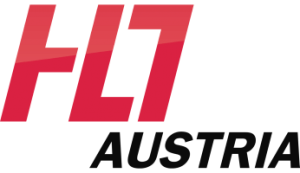Terminology Track
Acknowledgement
The given structure of this track is mainly based on HL7 International's Connectathon Terminology Service Track definition.
Short Description | Terminology, and the proper use of it, is fundamental for everything that we do in FHIR. The purpose of this track is to test and enhance the capabilities of FHIR Terminology Services provided by the new Austrian e-Health Terminology Server and promote their use throughout the FHIR implementation community. |
Long Description | The FHIR specification includes support for the provision of a terminology service - that is, a service that lets healthcare applications make use of codes and value sets without having to become experts in the fine details of the value sets and underlying code systems and their related resources. The management and proper use of terminology is fundamental to effective, interoperable data exchange, so this is an important capability to provide and test in the HL7 AT FHIR Hackathon. We expect and hope to achieve: (1) improved capabilities of terminology servers measured by testing performance, (2) improved and more extensive terminology service testing, (3) implementation and implementer experience with aspects of the terminology services specifications, including experience with newer and previously lesser used terminology service operations and operation capabilities, (4) identify potential improvements as well as deficiencies and possibly errors in the FHIR terminology service specifications based on implementation and testing experience, and (5) increased awareness and utilization of terminology services. |
Type | Test the design of a Resource/set of Resources |
Submitting Work Group/ | Terminology Services Management Group |
Track Lead(s) | |
Track Lead Email(s) | tc-fhir@hl7.at |
Related Tracks |
|
FHIR Version | FHIR R4 |
Specification(s) this track uses | http://hl7.org/fhir/terminology-service.html (Terminology Services) http://www.hl7.org/fhir/valueset.html (ValueSet) http://www.hl7.org/fhir/codesystem.html (CodeSystem) https://hl7.org/fhir/conceptmap.html (ConceptMap) https://www.hl7.org/fhir/terminologycapabilities.html (Terminology Capabilities) |
Artifacts of focus | http://hl7.org/fhir/terminology-service.html (Terminology Services) http://www.hl7.org/fhir/valueset.html (ValueSet) http://www.hl7.org/fhir/codesystem.html (CodeSystem) https://hl7.org/fhir/conceptmap.html (ConceptMap) https://www.hl7.org/fhir/terminologycapabilities.html (Terminology Capabilities) |
Expected participants | |
Date / Time | Thursday May 19, 01:00-05:00pm CEST |
Test Servers | See Test Servers |
Track Details | Prerequisites (recommended)
System rolesFHIR Terminology ServerFor service providers, implement the following operations from http://hl7.org/fhir/terminology-service.html:
Support additional capabilities:
Service providers are not required to implement all of this functionality - it's a lot to do. For new implementers, start at the top and work down (generally). FHIR Terminology Client ConsumerImplement any one or more of:
At least one server supports all of these operations and capabilities (http://test.fhir.org/r4/). Other servers (see the list above) will support several of these operations and capabilities. ScenariosFor all described scenarios suitable REST requests are provided in the following Postman collection: HL7 AT FHIR Hackathon - Terminology Track.postman_collection.json Please note: The Postman collection generally uses PUT to add instances to a FHIR server in order to specify the ID of resource. For your usage it might be advisable to use POST for the creation of new resources. You have to note the ID created by the FHIR server in those cases. 1 - Introduction to TerminologyFor starters this scenario provides a 'friendly introduction' for those new to the Terminology Track in FHIR. Attendees participate in this track using a simple scenario that can be met with limited domain knowledge. It is quite feasible to complete the client side terminology interaction of the track within a day with only knowledge of a development environment and some previous FHIR knowledge (such as Patient). If creating a server, advanced preparation will be required. Basic tasks in this scenario are
Pre-connectathon testing is encouraged, but not required, where the participants can utilize the publically-available FHIR Terminology Servers listed above. Testing and test reporting at the Hackathon event will be self-attested and primarily involves peer-to-peer execution between known FHIR clients and/or servers. 2 - Dealing with hierarchical ValueSetsWithin the Austrian e-Health Terminology Server there are a lot of ValueSets which do have a specified hierarchy. The difference between retrieving the whole ValueSet resource (GET) and the execution of the $expand operation shall be evaluated. Furthermore, an in-depth analysis of the parameters available for the $expand operation could be carried out. Examples for ValueSets having hierarchies specified:
3 - Validation of CodesGiven that CodeSystems and ValueSets are provided on the Austrian e-Health Terminology Server it is interesting if and how a FHIR resource (e.g. a Patient) is being validated that is uploaded on another FHIR server but referencing one of the terminologies hosted on the Austrian e-Health Terminology Server. 4 - CanonicalsCurrently, the CodeSystem.url and ValueSet.url of all resources on the Austrian e-Health Terminology Server start with https://termgit.elga.gv.at/ The answers to the following questions shall be found
5 - Dealing with Deprecated CodesCertain codes may be deprecated within a CodeSystem and/or within a ValueSet.
6 - Git / GitLab APIUse Git and/or the GitLab API to retrieve terminologies. Refer to documentation of https://termgit.elga.gv.at/:
Security and Privacy ConsiderationsMost FHIR terminology terminology service endpoints are open (at present). This may change in the future as adoption and implementation experience increases in order to more directly manage external (non-HL7) terminology licensing considerations. Some servers do allow or require authentication. |
